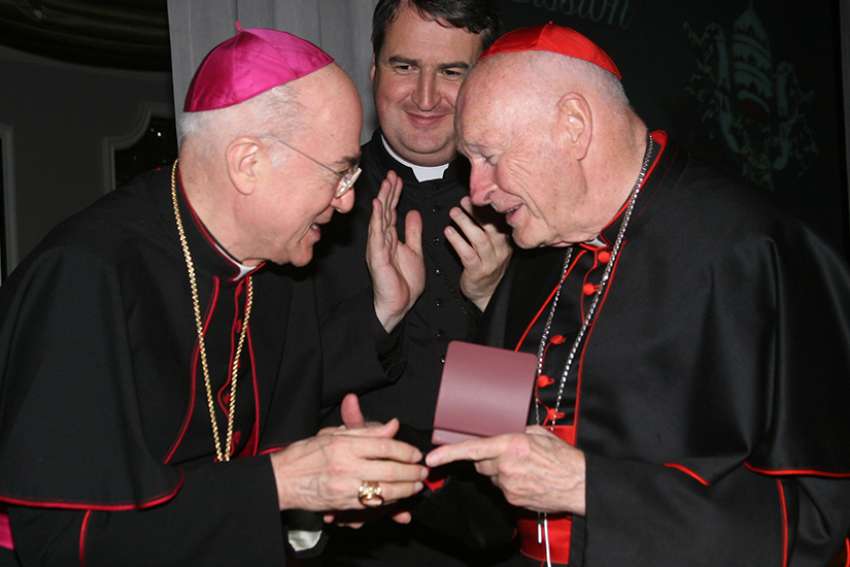File his desire under being careful what you wish for. In the aftermath of brutally frank allegations from a career Vatican diplomat, our Holy Mother Church is writhing in agony. And that mud? It seems to have hit the Holy Father squarely in both eyes.
A writer in First Things equated the bombshell from Archbishop Carlo Maria Viganò to eruption of civil war in the Church. Others have depicted publication of the former papal nuncio’s 7,000-word tell-all as an outbreak of ecclesial hand-to-hand combat.
Whether or not the martial metaphors are apt or exaggerated, there is no way to overstate the pain of the occupant of the Chair of St. Peter being openly accused by a credible Vatican insider of complicity in covering up the squalid scandal surrounding now former Cardinal Theodore McCarrick. Viganò is no mere gossip-mongering crank filled with speculation and devoid of first-hand knowledge. He is a former papal nuncio to the U.S. with a deep background in the Roman bureaucracy.
So when he insists he ensured five years ago, in face-to-face conversation, that Pope Francis knew about the thick file detailing McCarrick’s sexual liaisons — consensual and coerced — with minors, seminarians and priests, the balance of credibility is on his side. Even when he goes further and alleges that protective treatment of McCarrick by the curia, and by extension Francis himself, was the work of a pro-homosexual Church mafia — Viganò uses the epithet in the document — it is impossible to dismiss him as some fever-brained conspiracy theorist with a rusty axe to grind.
That said, Francis’ apparently opaque response to the archbishop’s “testimony” rang true for me. At a media conference aboard his aircraft returning from Ireland, the Holy Father said journalists especially would recognize the document’s true nature. I think I know what he meant, and I don’t think he meant just journalistic tit-for-tat fact checking. I think he meant the heart of the writer himself.
Reading it carefully hours after it was released, I experienced in it something intimately familiar to anyone who has ever worked in a newsroom. It’s the plain brown envelope outpouring from the infinite variety of the afflicted: injured workers denied adequate compensation, losing parties in divorce or custody cases, the homeless who have had their castles on the hill stolen through the perfidy of the legal system.
They invariably begin in calm expository mien and then descend with ever-wilder arm waving into ever-widening blame. Some are neatly typed. Some are in green crayon. All might be true. Each brings the inescapable sense of dubiousness.
One key element Viganò’s opus shares with such documents is the inability to stop what has been started. Indeed, about mid-way through, he says, “As far as the Roman curia is concerned, for the moment I will stop here.” He then immediately goes on to accuse another 10 cardinals, bishops and archbishops on top of the dozen he has already implicated.
An overpowering motivation seems to overwhelm natural circumspection. It leads to the self-defeating tactic of making allegations that are not only unsubstantiated, but not even genuine accusations. The naming is deemed sufficient for the blaming.
There is risk of severe reputational damage in that terrible accusatory stretch, but no time to balance its potential harm. The next accusation is the imperative.
None of which says Viganò’s claims are true or untrue, in whole or in part. It says only that it leaves me extremely dubious, based on my experience, about such being the right way to confront the corruptions afflicting the Church. That they must be confronted is beyond question. How is that possibly achieved by adding wound upon wound, inflicting ever greater suffering on Holy Mother Church?
Seeing the result of the Holy Father’s wish for pain and bruises, then, is it not time to turn instead to prayer, penance, adoration of the face of Christ?
(Stockland is publisher of Convivium.ca and senior fellow with Cardus.)


